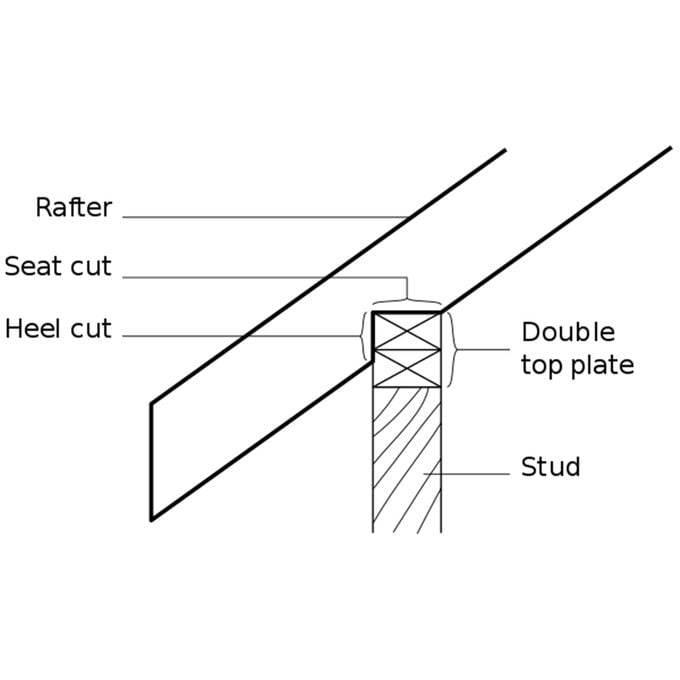What is a Birdsmouth Cut and How to Cut It On a Rafter
Updated: May 23, 2024
A Birdsmouth cut can create a joint to fix rafters and joists to wall plates. Click to learn more about this traditional roofing method.

Roofing might seem daunting to the DIY enthusiast. There are so many terms, methods, and tools to understand. Among them, the term ‘birdsmouth’ stands out. The birdsmouth joint has been a mainstay in roofing for many years, and for a good reason. It offers a reliable solution for attaching rafters to wall plates. Let’s delve deeper into this fascinating topic.
On This Page
What Exactly is a Birdsmouth?
A birdsmouth is a specialized cut in the bottom of a rafter. This cut allows the rafter to sit flatly and securely on a wall top plate, ensuring the stability of the roofing structure. Essentially, it’s like a little notch or “mouth” that helps the rafter to have a better grip and alignment.
Components of the Birdsmouth:
- Seat Cut: This is the horizontal part where the rafter rests on the wall. Think of it as a bird’s perch!
- Heel Cut: The vertical cut which aligns snugly with the exterior side of the wall. This ensures a close, tight fit.
Why is the Birdsmouth Essential?
The design of the birdsmouth ensures that the weight of the roof is evenly distributed over the walls. This even distribution prevents undue stress on any single point of the roof structure, ensuring longevity.
How to cut the Perfect Birdsmouth:
A crucial aspect to remember when cutting a birdsmouth is to ensure the structural integrity of the rafter. As a rule of thumb, never remove more than one-third of the depth of the rafter. Overcutting might compromise the strength and reliability of the rafter, leading to potential roofing problems in the future.
Securing the Rafters:
Once you’ve made your birdsmouth cut, you’ll need to secure the rafter to the wall top plate. This can be achieved in a couple of ways:
- Toenails: These are driven through the birdsmouth directly into the wall top plate.
- Metal Rafter Tie Down Plates: For those looking for additional security, these plates offer an extra layer of protection.
A Note on Manufactured Trusses:
Manufactured trusses are unique. Because of their engineering and design, they typically don’t require birdsmouth cuts. It’s also essential to avoid cutting birdsmouths into trusses. As engineered systems, they’re designed to bear loads in a specific way. Cutting into them can compromise their structural integrity.
Summing Up Birdsmouth:
The birdsmouth is a time-tested, ingenious solution in the roofing world. Whether you’re considering taking on a roofing project or just looking to understand the craftsmanship behind your home, it’s intriguing to learn about techniques like the birdsmouth. Such techniques remind us of the ingenuity and thoughtfulness that goes into building safe, reliable structures.
